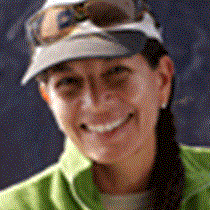Santa Cruz Island
Today we had our first encounter with the iconic animals of Galapagos, the giant tortoises. We landed early at the National Park dock and head immediately to the Charles Darwin Research Station and the National Park Headquarters, to visit one of the most significant and successful programs in the ecological restoration of the islands: the giant tortoise breeding program.
Babies from different islands are kept here until they reach a certain size and age, when they can be released back to their original islands. We also had the chance to see the entire population of Española Island, 2 males and 11 females, successfully parents of more than 1300 tortoises born in captivity!
After the station, we head to the town of Puerto Ayora, for some shopping and exploration before boarding a series of buses for a 30 minute drive to a private sugar and coffee farm owned by a local family. Here our guests learnt about the art of producing good organic coffee and traditional sugar cane liquor. After this, we headed back again in the buses to a different location to reach a charming restaurant with great views of the fields and the coastline of Santa Cruz. Food was served, and our guests enjoyed knowing that all produce was local harvested and that we were supporting the local community by offering these unique experiences to our guests.
Afterwards we visited another private farm, located in the middle of the tortoise migratory route, to search for tortoises in the wild and to explore a lava tunnel, an incredible geological formation formed thousands of years ago. Perhaps more than 50 tortoises were around the very lush and green forest of native and endemic species such as the epiphyte-laden endemic Scalesia trees and Guayabillo trees. Some of the giant and intriguing tortoises were foraging, some resting and of course some were mating, as many other species we have seen in the past days, as part of the nature cycle on the islands.
To admire these incredible animals for their examples of survival, adaptation and evolution is a gift for each of us and a reminder that it is our responsibility to take care of unique ecosystems such as Galapagos.







